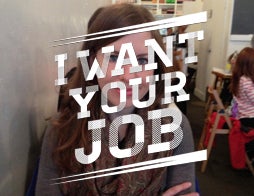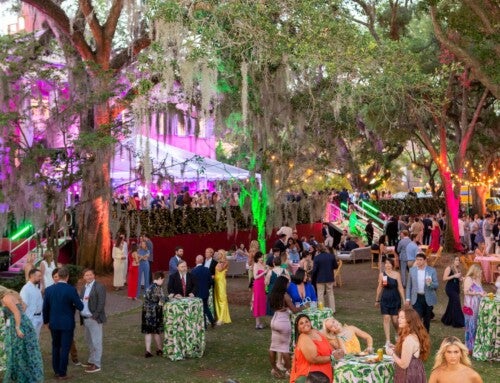Like many people in New York City, Katherine Borkowski ’05 gets up every morning and goes to work. Unlike many people, Borkowski’s work takes place in the Metropolitan Museum of Art (the Met).
After her graduation from the College of Charleston with dual degrees in art history and arts management and an internship at the Halsey Institute of Contemporary Art under her belt Borkowski went on to receive dual master’s degrees in information and library science and the theory, criticism and history of art, design and culture at Brooklyn, New York’s Pratt Institute. Now, as a Digital Resources and Instructional Librarian at the Met, she spends her days researching, teaching and digitizing the Met’s libraries.
Q: How would you describe your position?
A: I am part of a team that manages the libraries’ electronic resource subscriptions. For example, before purchasing or subscribing to new resources, we run trials to evaluate them in terms of content and functionality.
I also lead an instruction team that supports research staff in the museum, including curators, research assistants, and fellows. Some of our activities include organizing visits to curatorial departments to demo and discuss new and existing library resources, as well as providing library orientations to new staff members.
While those are the two main components of my position, I also participate in the library’s efforts to digitize items from the Museum’s libraries, such as rare books, manuscripts and museum publications, and provide reference services in Nolen Library, another research library within the museum.
Q: What is it like to work in the Met?
A: It’s an incredible place to work. There is a very high standard for the work that we do, but I also feel like it is a place where I can continue to learn and grow as a library professional. Another major perk of working in such a prominent cultural institution is that I have an encyclopedic collection of art to explore on my lunch break.
My workdays and weeks vary depending on what kinds of projects I am working on. These might include evaluating new digital resources, updating our web portal, collecting statistics, creating instructional videos for our website, or preparing for departmental presentations to curatorial staff. Some days I’ll work with our vendors and other library staff to troubleshoot issues that arise with our electronic resource subscriptions. It is a dynamic position, which keeps things interesting.
[RELATED: Check Out the Halsey Institute]
Q: How did you become interested in your field?
A: I became interested in archives while I was working on an independent study for my major in art history. I researched a collector named Motte Alston Read whose collection of Japanese woodblock prints is held by the Gibbes Museum of Art.
This was my first experience doing archival research, and I found myself drawn to archives not only as valuable research tools, but also the methods of organizing them and making them accessible to researchers. After I graduated from the College I had the opportunity to catalog a collection of miniature replicas of famous works of art by Richard McMahan as part of my work with the Clemson Architecture Center in Charleston and the Halsey Institute of Contemporary Art. This made me realize that I wanted to focus on collections, whether they are art, books, or archives.
Q: How did you hear about your position?
A: It was advertised on the listserv of the New York Metropolitan Chapter of the Art Libraries Society of North America (ARLIS/NY). I joined this and other local and national library listservs while I was in graduate school to keep up with events and job postings.
Q: What was the interview process like?
A: The interview was a three-part process. It began with a brief in-person interview with a human resources representative. Then I met with a search committee of four people for about an hour. After a break, I gave a twenty minute instructional presentation to the search committee and other members of the library staff about how to find information about objects in the museum using resources that are freely available on the Museum’s website.
[RELATED: Learn about the College’s arts management and art history majors]
Q: What do you think made you stand out?
A: I think that I had the right mixture of skills and experience that the position required. When I applied for the position, I had been teaching a variety of workshops at Pratt Institute for the School of Information and Library Science. I also produced a video tutorial for a project called GeoStoryteller that I worked on after graduate school.
I put the video, as well as examples of other projects on my website. The search committee referenced this video during my interview. I think it helped that they could see evidence of the skills and experience that I mentioned in my cover letter before I even came in to interview.
Q: How did your education help you prepare?
A: At both the College and Pratt I had truly great faculty members. They helped to point me toward internships and opportunities beyond my coursework. This really helped me take what I learned in my courses and to put it into practice.
Q: What advice would you give to current students interested in the fine arts, library and/or museum fields?
A: I think it is important to remember that you can gain valuable skills and experience in other fields, which can be applied to careers in the arts. The economy was still fairly bad when I finished graduate school, and that led me to take opportunities outside of the arts that I might not have originally considered. But it was in those positions that I was able to gain some of the key skills that I needed for my current position.





